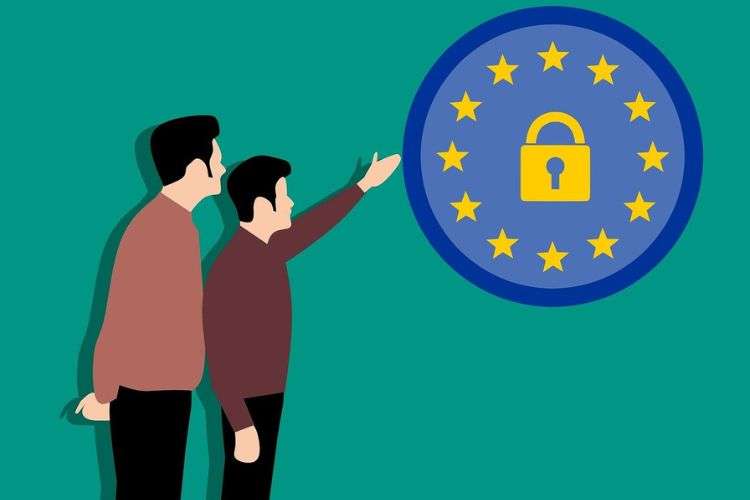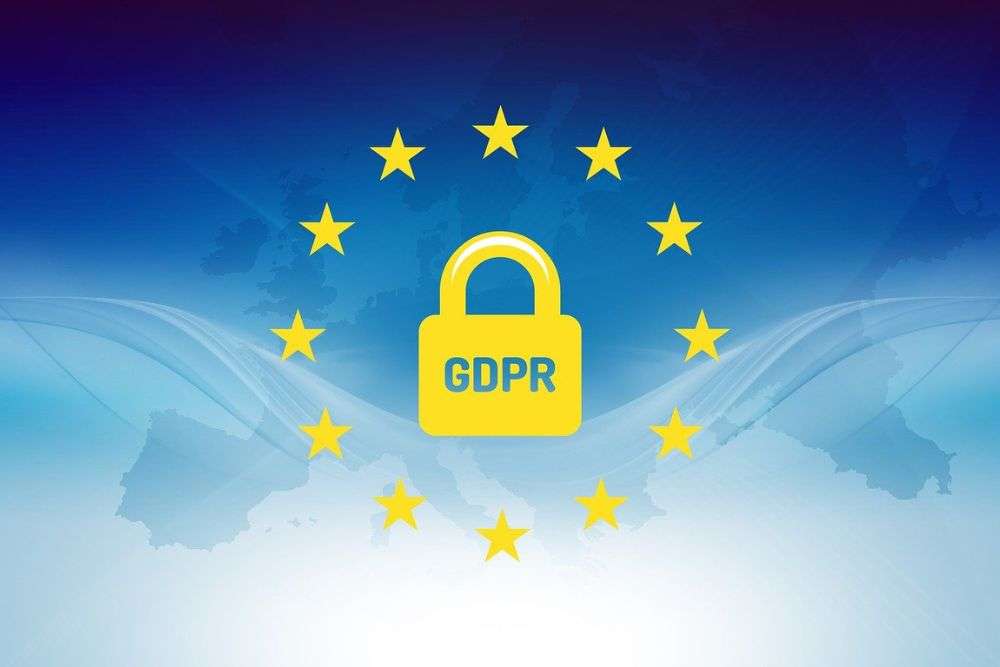In the digital age, data has become the lifeblood of businesses and organizations across the globe. With the exponential growth of data, concerns about privacy and security have risen proportionally. In response to these concerns, the General Data Protection Regulation (GDPR) was introduced. GDPR is a sweeping set of regulations that has reshaped the landscape of data protection and privacy. In this in-depth guide, we’ll explore the intricacies of GDPR, its principles, implications, and real-life applications.
| Takeaway |
|---|
| GDPR, effective since May 25, 2018, protects personal data globally. |
| Fundamental GDPR principles include transparency, purpose limitation, and data minimization. |
| Data Protection Officers (DPOs) play a crucial role in ensuring GDPR compliance within organizations. |
| Individuals have rights, such as access, rectification, and data portability, empowering them in the digital landscape. |
| GDPR compliance requires strategic steps, from data audits to robust breach response plans, tailored to organizational needs. |
1 The Data Revolution
The 21st century ushered in a data revolution. Organizations started collecting vast amounts of personal data, from customer information to employee records. This wealth of data brought both opportunities and challenges, leading to the need for comprehensive data protection regulations.
GDPR, short for the General Data Protection Regulation, emerged as a landmark legal framework in 2018. Its primary objective: to safeguard the personal data of European Union (EU) citizens. But its impact extends far beyond the EU’s borders. GDPR affects any organization that handles the data of EU residents, regardless of where that organization is based. You may read more about the Individuals Data Protection rights here.
GDPR Online Certification Course
Join our expert vetted GDPR Online Certification Course and upgrade your Career. For further queries – Email us at info@tempest.ie or Call us at 087 738 8306
Table 1: GDPR at a Glance
| Key Information | Details |
|---|---|
| Full Name | General Data Protection Regulation (GDPR) |
| Effective Date | May 25, 2018 |
| Applicability | Applies to organizations handling EU data |
| Key Focus | Protection of personal data and privacy |
| Penalties for Non-compliance | Fines up to €20 million or 4% of global revenue |
2 Key Principles of GDPR
Protecting Privacy at Its Core
At the heart of GDPR lie several key principles designed to ensure the privacy and security of personal data. These principles provide the foundation for GDPR’s regulations and requirements.
Table 2: Key GDPR Principles
| Principle | Description |
|---|---|
| Lawfulness, Fairness, and Transparency | Data processing must be legal, fair, and transparent. |
| Purpose Limitation | Data should be collected for specified, legitimate purposes. |
| Data Minimization | Only necessary data should be collected and processed. |
| Accuracy | Data must be accurate and kept up-to-date. |
| Storage Limitation | Data should be retained only as long as necessary. |
| Integrity and Confidentiality | Measures to ensure data integrity and security. |
| Accountability and Transparency | Organizations must demonstrate compliance. |
3 Understanding Data Protection Officers (DPOs)
Guardians of Compliance
Within organizations, the role of Data Protection Officer (DPO) has emerged as a crucial aspect of GDPR compliance. DPOs act as guardians of data protection, overseeing an organization’s adherence to GDPR regulations.
Table 3: Responsibilities of a Data Protection Officer
| Responsibility | Description |
|---|---|
| Monitoring Compliance | Ensure the organization follows GDPR guidelines. |
| Educating and Advising | Educate staff and provide advice on data protection. |
| Cooperating with Authorities | Liaise with data protection authorities. |
| Data Protection Impact Assessments | Assess and mitigate data protection risks. |
4 Empowering Data Subjects
Rights of the Individual
GDPR empowers individuals by granting them a set of rights over their personal data. These rights provide individuals with control and transparency over how their data is processed.
Table 4: GDPR Rights for Data Subjects
| Right | Description |
|---|---|
| Right to Access | Individuals can request access to their data. |
| Right to Rectification | Data subjects can correct inaccurate data. |
| Right to Erasure | Also known as the “Right to be Forgotten.” |
| Right to Data Portability | Transfer data from one service provider to another. |
| Right to Object | Object to processing for direct marketing, etc. |
5 The Importance of Consent
Consent in the Digital Age
Consent is a cornerstone of GDPR. It ensures that individuals have a say in how their data is used. Obtaining and managing consent is critical for organizations to remain compliant.
Table 5: Key Points on Consent in GDPR
| Aspect | Details |
|---|---|
| Explicit Consent Required | Clear, affirmative action for data processing. |
| Withdrawal of Consent | Individuals can withdraw consent at any time. |
| Consent for Children | Special protections for child data processing. |
6 Navigating Data Processing
Legitimate Data Processing
GDPR provides clear guidelines on when and how organizations can process data. Understanding these rules is essential for compliance.
Table 6: Lawful Bases for Data Processing under GDPR
| Basis | Description |
|---|---|
| Consent | Data subject has given clear consent for processing. |
| Contractual Necessity | Processing necessary for contract performance. |
| Legal Obligation | Processing required to comply with the law. |
| Vital Interests | Protecting life or vital interests of data subjects. |
| Legitimate Interests | Processing based on legitimate interests of the organization. |
7 Ensuring GDPR Compliance
Your GDPR Compliance Checklist
Compliance with GDPR is not optional; it’s mandatory. Here’s a step-by-step checklist to guide your organization toward GDPR compliance.
Table 7: GDPR Compliance Checklist
| Step | Description |
|---|---|
| Data Audit | Identify and document all data held by your organization. |
| Appoint a DPO | Designate a Data Protection Officer if required. |
| Update Policies | Revise and implement data protection policies. |
| Employee Training | Train staff on GDPR principles and compliance. |
| Consent Management | Establish clear procedures for obtaining and managing consent. |
| Data Protection Impact Assessments | Identify and mitigate data protection risks. |
| Data Breach Response | Develop a data breach response plan. |
| Documentation | Maintain records of data processing activities. |
| International Data Transfers | Ensure data transfers comply with GDPR. |
8 Handling Data Breaches
Swift and Transparent Reporting
Data breaches can happen to even the most diligent organizations. GDPR mandates a clear process for reporting data breaches to authorities and affected individuals.

Table 8: Steps for Handling Data Breaches under GDPR
| Step | Description |
|---|---|
| Detect and Assess | Identify and assess the breach’s scope and impact. |
| Notify Authorities | Report the breach to relevant data protection authorities. |
| Inform Data Subjects | Notify affected individuals without undue delay. |
| Investigate | Investigate the root cause and take corrective action. |
GDPR Online Certification Course
Join our expert vetted GDPR Online Certification Course and upgrade your Career. For further queries – Email us at info@tempest.ie or Call us at 087 738 8306
9 GDPR and International Data Transfers
Crossing Borders with Data
In our interconnected world, data flows across borders regularly. GDPR places strict rules and considerations on such international data transfers.
Table 9: Rules and Considerations for International Data Transfers
| Rule or Consideration | Description |
|---|---|
| Adequacy Decisions | Transfer data to countries with adequate data protection. |
| Standard Contractual Clauses | Use predefined contractual clauses for data transfers. |
| Binding Corporate Rules | Intra-organizational data transfer rules. |
| Codes of Conduct | Industry-specific codes to ensure compliance. |
| Certification Mechanisms | Certification for adherence to GDPR standards. |
10 GDPR Implications for Website Cookies
Sweet or Sour for Cookies?
Website cookies, those small pieces of data that enhance user experience, are not exempt from GDPR. Compliance is essential, but it doesn’t mean the end of cookies.
Table 10: Managing Cookies under GDPR
| Aspect | Details |
|---|---|
| Informed Consent | Obtain user consent before setting non-essential cookies. |
| Cookie Policies | Clearly communicate your cookie usage in policies. |
| Cookie Banner | Implement a cookie banner for user choices. |
| User Control | Allow users to manage cookie preferences. |
11 GDPR for Small Businesses
Scaling Compliance
Small businesses often face unique challenges in meeting GDPR requirements. Tailored advice can help them navigate the regulatory landscape.
Table 11: GDPR Tips for Small Businesses
| Tip | Description |
|---|---|
| Data Mapping | Understand the data you collect and process. |
| Third-Party Vendors | Ensure compliance of vendors handling your data. |
| Employee Training | Educate staff on data protection principles. |
| Documentation | Keep records of data processing activities. |
12 Penalties and Fines under GDPR
The Cost of Non-Compliance
GDPR is not to be taken lightly. Non-compliance can result in substantial fines and reputational damage.
Table 12: GDPR Penalties and Fines
| Violation | Fine |
|---|---|
| Data Processing Violations | Up to €20 million or 4% of global revenue. |
| Data Subject Rights Violations | Up to €20 million or 4% of global revenue. |
| Data Breach Reporting Delays | Up to €10 million or 2% of global revenue. |
13 Real-Life GDPR Case Studies
Learning from the Frontlines
Real-life case studies provide invaluable insights into GDPR implementation and its outcomes. Let’s explore a few noteworthy examples.
Table 13: Real-Life GDPR Case Studies
| Case Study | Key Takeaways |
|---|---|
| Facebook and Cambridge Analytica | Data misuse led to public outcry and regulatory scrutiny. |
| British Airways Data Breach | Demonstrates the significant financial consequences of breaches. |
| Google’s GDPR Fine | Highlights the potential impact on tech giants. |
14 GDPR in E-commerce
Compliance for Online Retail
E-commerce businesses handle vast amounts of customer data. GDPR compliance is essential to maintain trust and avoid penalties.
Table 14: E-commerce and GDPR Compliance
| Aspect | Details |
|---|---|
| Customer Consent | Ensure clear consent for data processing. |
| Data Security | Protect customer data from breaches. |
| Data Portability | Enable customers to move their data. |
| E-commerce Platforms | Verify that your platform complies with GDPR. |
15 GDPR in Healthcare
Protecting Health Data
The healthcare industry deals with highly sensitive personal data. GDPR imposes stringent regulations to protect patient information.
Table 15: GDPR Impact on Healthcare
| Area of Impact | Details |
|---|---|
| Patient Consent | Consent is crucial for processing health data. |
| Data Security | Strong measures to safeguard patient information. |
| Medical Research | Balancing research needs with data protection. |
16 GDPR and Marketing Practices
Marketing in the Age of Privacy
GDPR has reshaped marketing practices, emphasizing transparency and user consent.
Table 16: GDPR in Marketing
| Marketing Aspect | Details |
|---|---|
| Consent for Marketing | Clear consent required for marketing activities. |
| Data Analytics | Ensure analytics comply with GDPR rules. |
| Email Marketing | Review email marketing practices for compliance. |
17 GDPR and Cloud Computing
Data Protection in the Cloud
The rise of cloud technology has raised questions about data security. GDPR addresses these concerns, even in the cloud.
Table 17: GDPR and Cloud Computing
| Cloud Consideration | Details |
|---|---|
| Data Processing in Cloud | Ensure cloud providers comply with GDPR. |
| Data Transfer | Follow GDPR rules when transferring data to the cloud. |
| Cloud Security | Implement strong security measures in the cloud. |
18 GDPR and Artificial Intelligence (AI)
The Intersection of AI and Privacy
Artificial Intelligence holds immense promise but also poses data privacy challenges. GDPR seeks to strike a balance.
Table 18: AI and GDPR Intersection
| AI Aspect | Details |
|---|---|
| Data Transparency | Transparency in AI algorithms and decision-making. |
| Data Processing Impact | Assess AI’s impact on data subjects’ rights. |
| Algorithm Explainability | Explain AI algorithms to meet GDPR transparency. |
19 Managing Employee Data under GDPR
HR in the GDPR Era
HR departments handle a wealth of employee data. GDPR requires special attention to employee data protection.
Table 19: Employee Data Management under GDPR
| Employee Data Aspect | Details |
|---|---|
| Consent and Processing | Compliance with GDPR rules for employee data. |
| Employee Rights | Inform employees about their rights. |
| Data Retention | Retain employee data only for necessary purposes. |
GDPR Online Certification Course
Join our expert vetted GDPR Online Certification Course and upgrade your Career. For further queries – Email us at info@tempest.ie or Call us at 087 738 8306
Conclusion
In this comprehensive guide, we’ve delved into the world of GDPR, from its core principles to its far-reaching implications. GDPR is more than just a set of regulations; it’s a commitment to safeguarding personal data and upholding the right to privacy. Whether you’re a global corporation or a small startup, understanding and complying with GDPR is essential in today’s data-driven landscape. By following the principles and best practices outlined in this guide, you can navigate the complexities of GDPR and ensure that your organization thrives while respecting individual privacy rights.
Remember, GDPR isn’t a one-time task—it’s an ongoing commitment to protecting data and respecting privacy, one that requires vigilance, transparency, and a deep understanding of the evolving data landscape.












